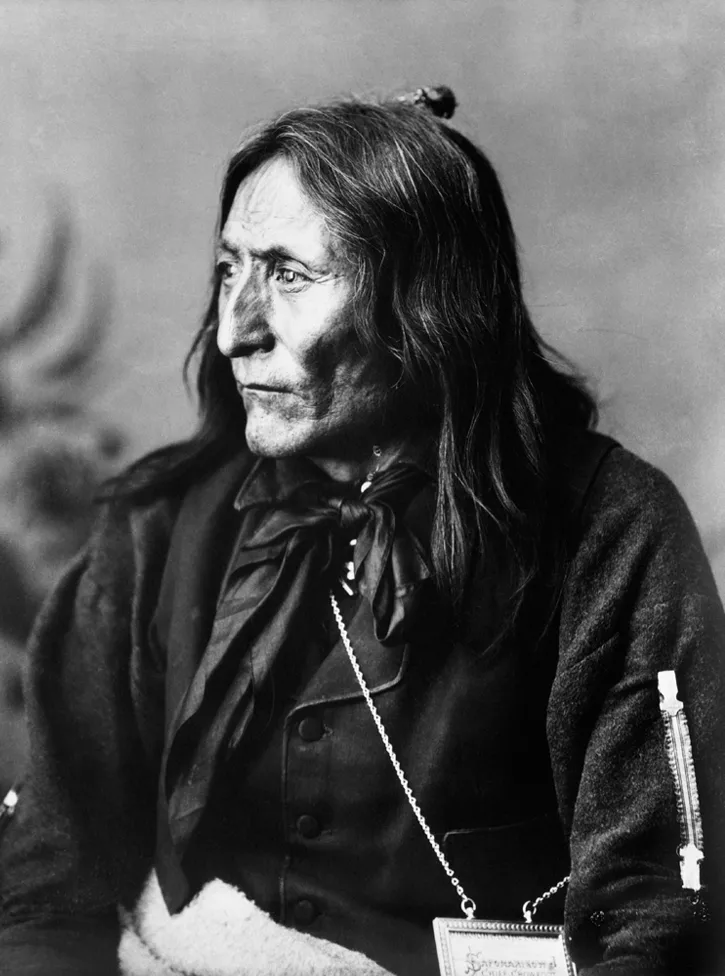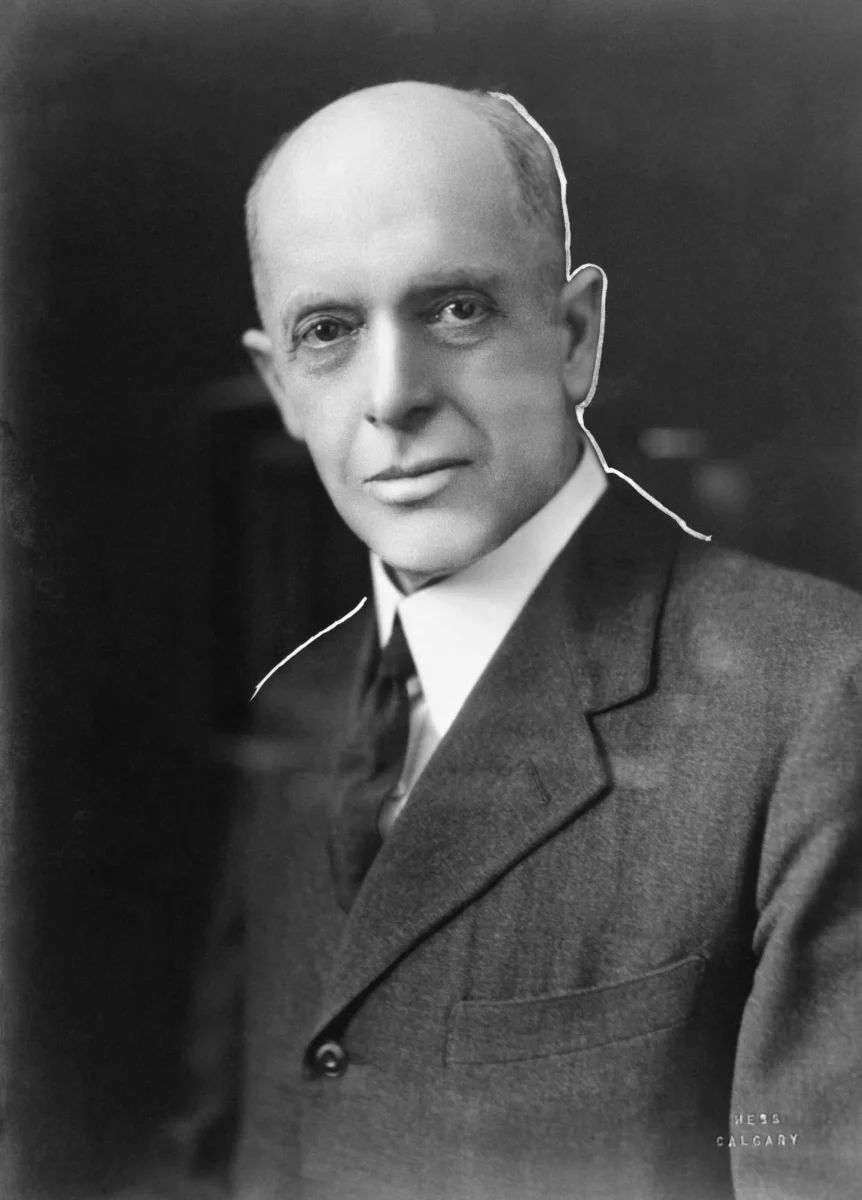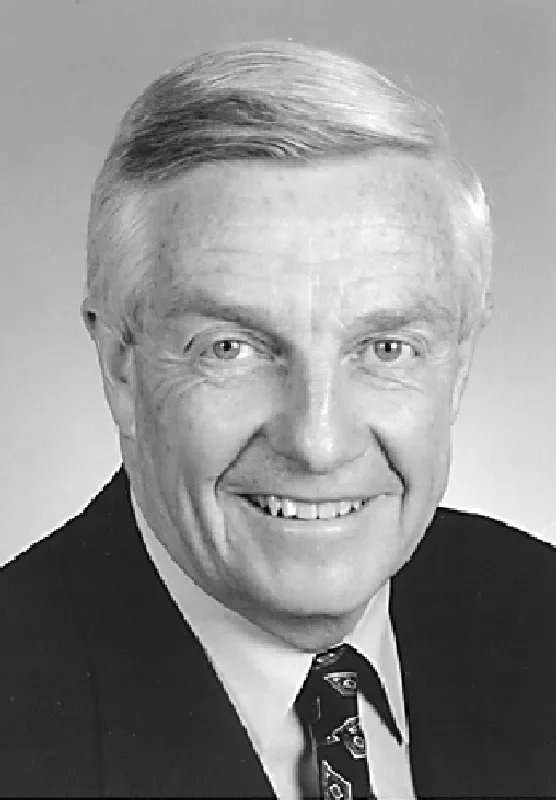Crowfoot was a chief of theSiksika First Nation. His parents, Istowun-eh’pata (Packs a Knife) and Axkahp-say-pi (Attacked Towards Home), were Kainai. He was only five when his father was killed during a raid on the Crow tribe, and a year later, his mother remarried to Akay-nehka-simi (Many Names) of the Siksika people. The young boy was adopted by the Siksika. Because of his brave performance and injury during the battle, he was later given his adult name, Issapommahksika, which means “Crow Indian’s Big Foot.”
At an early age, Crowfoot became an astute warrior and natural leader, fighting in many battles and amassing a great wealth in horses.
Crowfoot seldom went to war after he reached manhood. Instead, he became involved with raising horses, and in the affairs of the tribe. In 1865, with the death of the chief of his band, Crowfoot became a minor chief of the Blackfoot tribe, leading a band of about 21 lodges.
Crowfoot worked to establish peaceful relations with the white fur-traders and missionaries. In 1865 Chief Crowfoot met Roman Catholic missionary Father Lacombe and it was the beginning of a long friendship. Crowfoot also wanted to help his people ward off the devastation of alcohol and inter-tribal warfare and it was primarily due to his respect for the North West Mounted Police and their support that white settlement in Blackfoot territory occurred with little violence.
When the Canadian Pacific Railway sought to build their mainline through Blackfoot territory, negotiations with Albert Lacombe convinced Crowfoot to recommend to the Blackfoot Nation that it should be allowed.
In the smallpox epidemic of 1869-70 several Blackfoot leaders died and Crowfoot emerged as one of the three head chiefs of the tribe. As leader, in 1877 Crowfoot convinced 4000-5000 of the local natives (Bloods, Piegans, Stonies, and Sarcee) to congregate at Blackfoot Crossing on the Bow River to negotiate Treaty No. 7 with the Canadian government and the Northwest Mounted Police from Fort Calgary. Crowfoot took the lead on encouraging all of the chiefs to sign it.
By 1879 living conditions for his people had become so desperate that Crowfoot decided to move his people into Montana, but when his people faced starvation, Crowfoot brought his tribe back north. While he was away, the government of Canada had made some jurisdictional changes in the west. Rather than the North West Mounted Police he had to work with the newly formed Department of Indian Affairs. Crowfoot felt abandoned, betrayed and disillusioned with government but in 1885 he still maintained his allegiances and refused to join in the brewing North West Rebellion.
In 1886, Prime Minister Sir John A. Macdonald invited Crowfoot to Ottawa. Crowfoot tried to convince the government to help his people who were starving since the disappearance of the buffalo. Although he was not successful, he continued to recommend peaceful solutions rather than war.
Sickened over the treatment of his people by the government, Crowfoot spent his final unhappy years travelling among Bloods, Piegans, Sarcees, Gros Ventres and Assiniboines in Canada and Montana as a peacemaker in tribal disputes.
Despite his numerous wives Crowfoot only had four children who survived the smallpox and tuberculosis epidemics which were so disastrous to the natives at that time. His adopted son, Cree Chief Poundmaker, died abruptly only shortly after his release from jail in 1886.
Crowfoot passed away quietly of tuberculosis in 1890. He was buried at his favorite site of Blackfoot Crossing where Treaty #7 was signed. A bronze marker was placed on the grave indicating that he was a “Father of His People”. In 1948 a stone Cairn was erected to his memory at this same site paying tribute to this man of wisdom and courage who worked tirelessly for peace and support from the government for the natives of western Canada.
“What is life? It is the flash of a firefly in the night. It is the breath of a buffalo in the wintertime. It is the little shadow which runs across the grass and loses itself in the sunset.”
References & Links
van Herk, Aritha, Mavericks, An Incorrigible History of Alberta. Penguin Canada, 2001
Wikipdedia
Native Quoes and Brilliance Alberta Heritage
Biographi.ca



